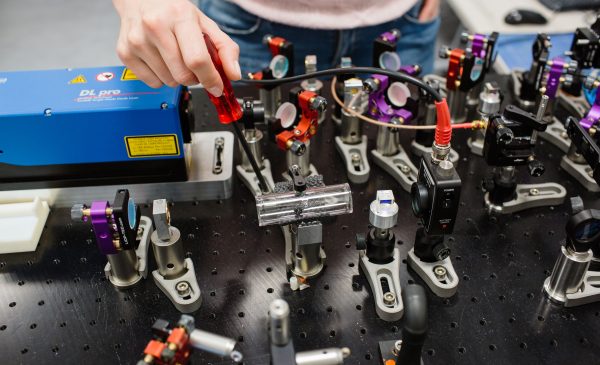Transforming diagnosis and detection in healthcare
Brain research remains one of the biggest challenges for 21st century science. At the UK Quantum Technology Hub Sensors and Timing, engineers and physicists are helping to develop a new generation of magnetic systems to improve our understanding of everything from basic cognition to dementia and ADHD.
The brain is the most complex natural structure in the known universe; it has roughly 86 billion neurons transmitting 1000 impulses per second. Its mysteries are being unpacked by the day, such as how it consolidates memories during sleep, and re-moulds and rewires after trauma.
Brain imaging will be increasingly vital as the global population ages, and proportional mortality from cancer and cardiovascular disease falls. Neurological disorders overall were the leading cause group of disability-adjusted life years (DALYs) by 2015, comprising 10.2%, and the second leading cause of deaths at 16.8%, or 9.4 million. Dementia prevalence is rising; the number of people living with dementia will double every 30 years, reaching 75 million people by 2025 with a marked increase in developing economies.
Through using Optically Pumped Magnetometers (OPMs), researchers at the Quantum Technology Hub have created the first wearable MEG system which permits free movement during scanning. This can be placed directly on the scalp, closer to the brain, enhancing the accuracy of signal detection five-fold. A wearable system imposes less restriction on movement by the subject and avoids the high installation and running costs of a conventional MEG system. This technology will enable detailed research into brain conditions such as Dementia, Cerebrovascular Disease and Parkinson’s.
Allison C. Nugent, Director, MEG Core Facility, National Institute of Mental Health: “The imaging program at the University of Nottingham is at the forefront of OPM-MEG technology. The recent proof-of-concept design of a prototype wearable OPM-MEG system has the potential to revolutionize the science of MEG. Currently the only available MEG systems are based on SQUID technology. These systems require immersion in liquid helium to function, adding substantial cost and overhead to any system. In addition, SQUID-MEG systems require a fixed gantry and an immobile subject. We believe that the development of a commercially viable OPM-MEG system, which would overcome these issues, would be of great value to the scientific community, by making MEG more accessible to neuroscience labs internationally”.








